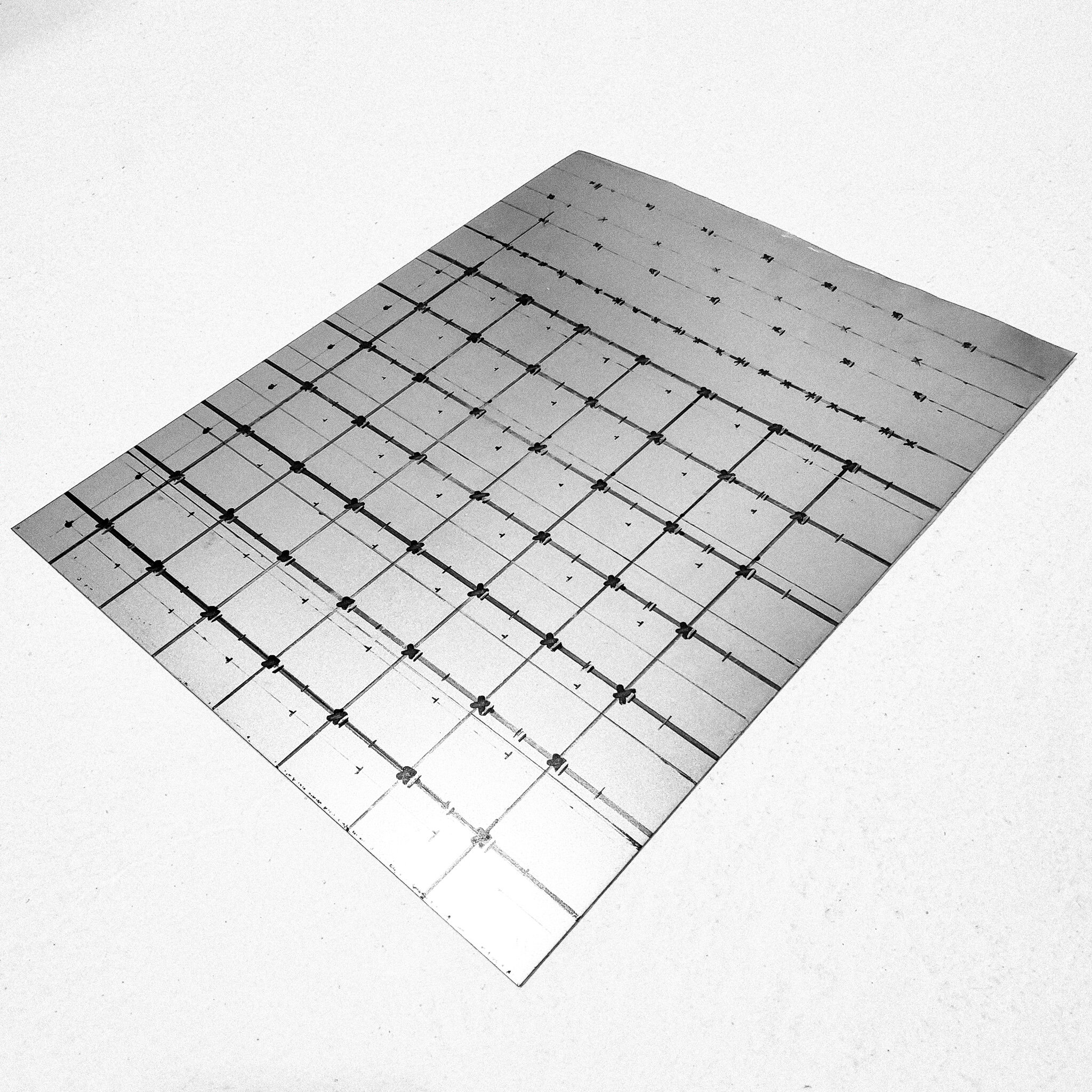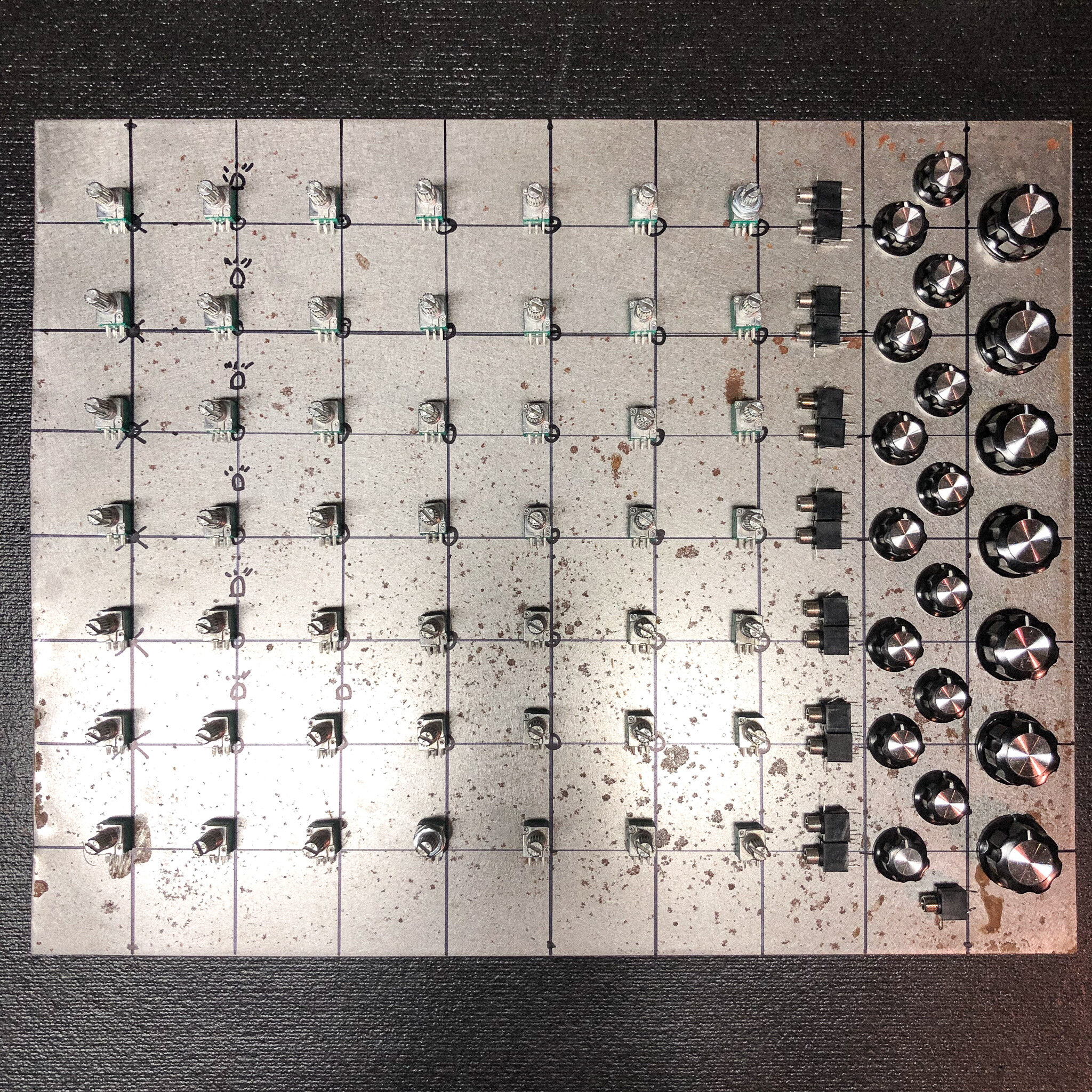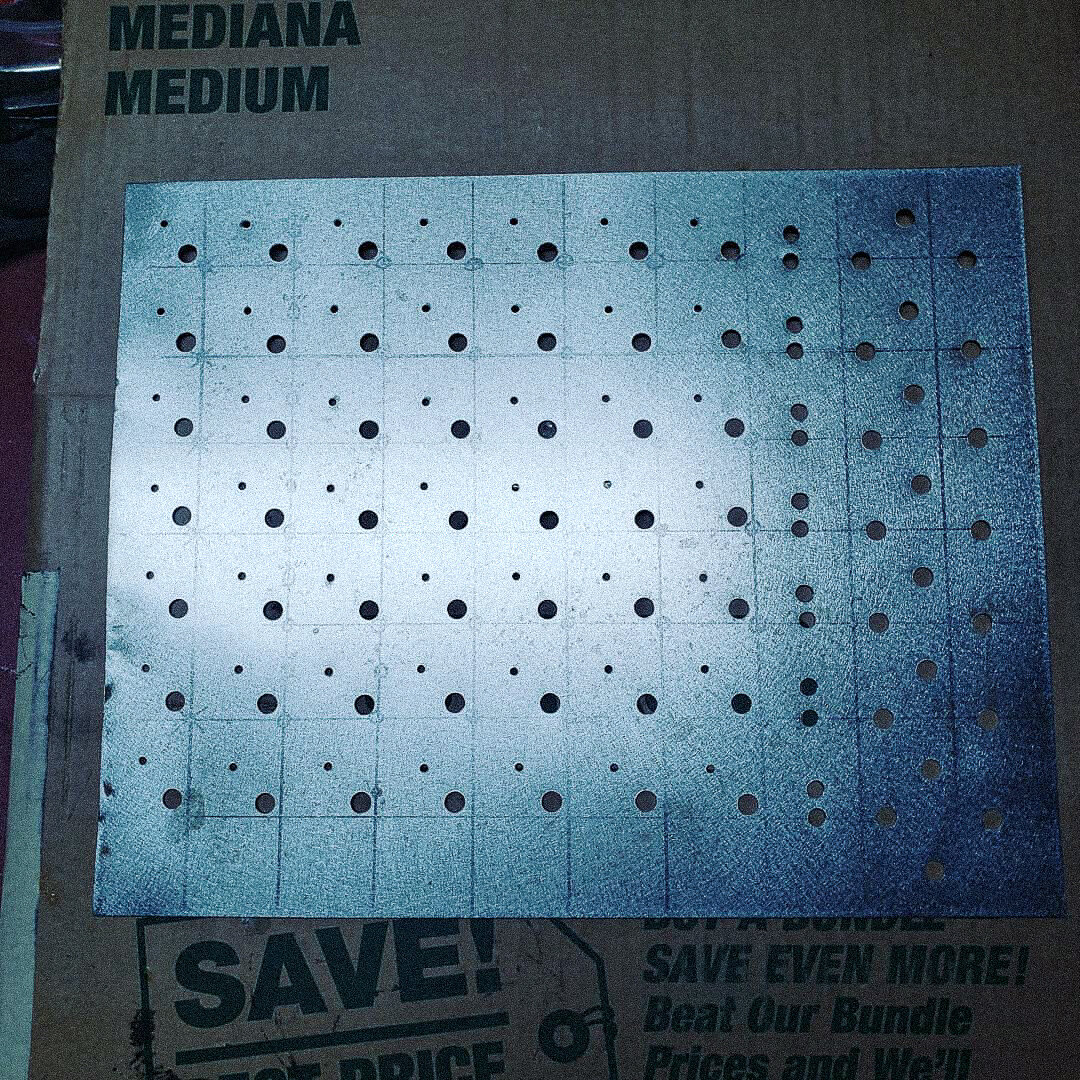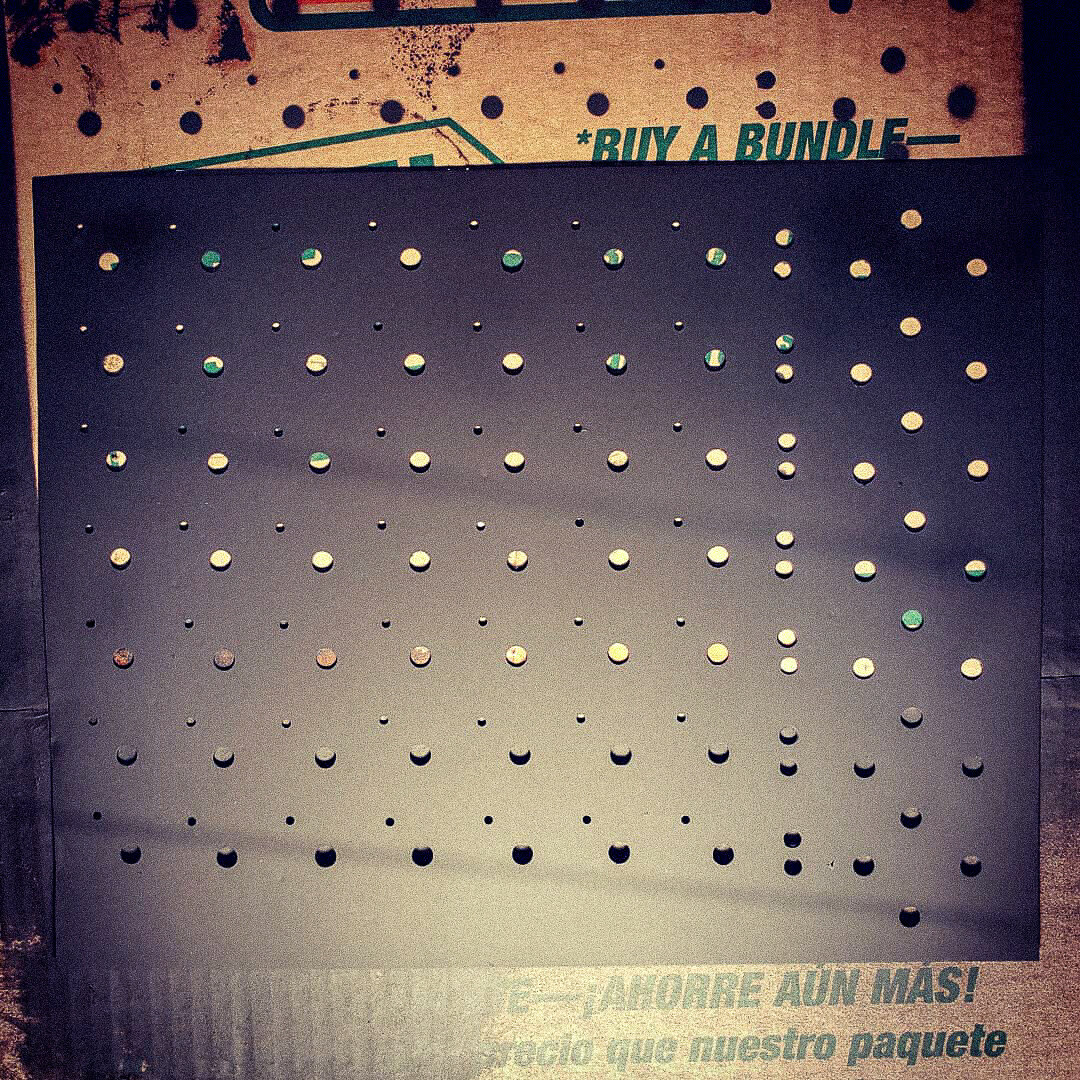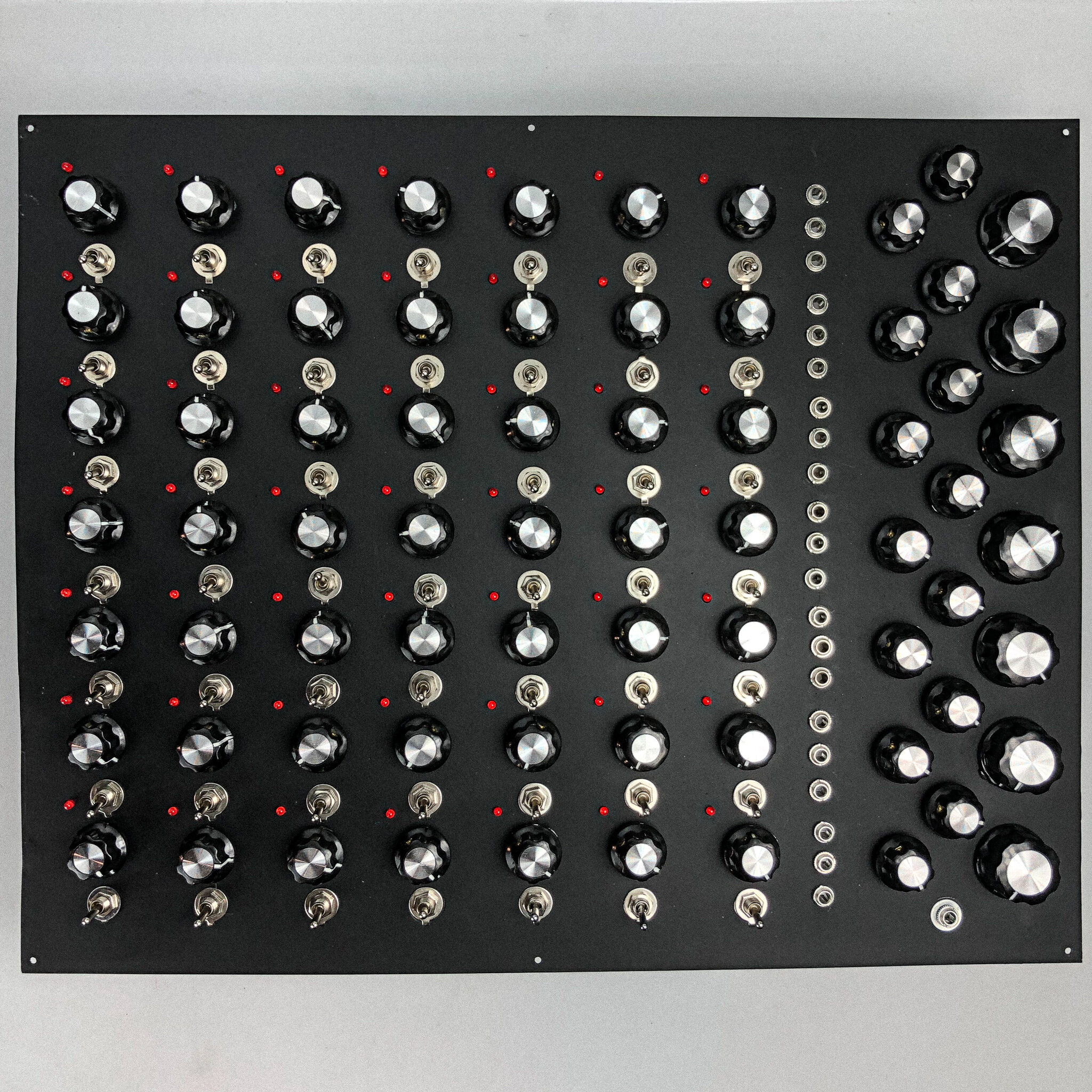ALBUM | DIY PROJECTS | GEAR | MOTR | PODCAST | VIDEO ART | VISUAL ART | PHILOSOPHY
This design is inspired by Look Mum No Computer’s mega drone. Sam Battle took a simple oscillator based on a transistor reverse avalanche technique that causes the transistor to self oscillate. He then asks a legitimate question, “How many oscillators are too many?” and explored that idea by building a 100 Oscillator Mega Drone. It is an impressive looking stack of knobs and LEDs that drones and sounds like a swarm of buzzing insects with all oscillators running at the same time.
Shown here is my version of this nightmare machine. I had originally planned to do an even bigger version - three panels of 49 oscillators in each panel for a total of 147. Why 147? I have no idea. I just wanted to see if I could do it, and now I know I can. The real question is, “Should I?” What purpose would it serve doing the same thing two more times? None.
My design isn’t just a drone synth. Hear it in action! It does drone and sounds like a wash of noise when all 49 oscillators are running at different frequencies, but that gets boring pretty quick, so I added switches to each oscillator. They can be flipped on and off at will. Each oscillator also has varied values of capacitors so that they will oscillate at different ranges of pitch. There are seven banks of seven oscillators, and each bank has it’s own volume and tone knob as well as an output and two inputs to take external voltages for modulating the volume and tone through vactrols.
This doesn’t track at all. It’s totally random. I didn’t use any diodes in this either. Each oscillator can potentially starve electricity from the other oscillators as certain pitches create different pitches on the adjacent oscillators. This sometimes cuts them out altogether like a gate, which gives a neat chaotic rhythm effect. By flipping the switches at random, this changes all the pitches for the entire bank. On the far right, each bank has a big volume knob for the mixing stage, where there is a summed output at the bottom.
Another thing I learned along the way is that the audio signal is weak without amplification. That’s not a problem when using an external powered mixer. I did consider building a gain circuit into the design but decided it would make more sense to build an external gain module so that I could also use it with other modules if I want to.
I ended up building a Quad Gain module based on a quick schematic drawing that was shared with me by Juanito Moore of Modular for the Masses (M4TM).
I now have a blank spot to fill in the MOTR Monolith case where the other two panels were intended to be placed.
I still have other ideas to explore, like maybe a massive array of CD40106 Schmitt triggers self-modulating each other? Something will emerge. I’m in no hurry.
-Zetsumei
ALBUM | DIY PROJECTS | GEAR | MOTR | PODCAST | VIDEO ART | VISUAL ART | PHILOSOPHY







